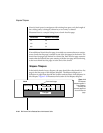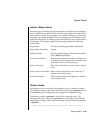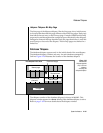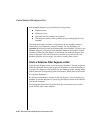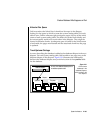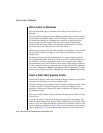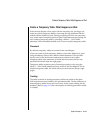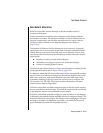
2-110 IBM Informix OnLine Database Server Administrator’s Guide
OnLine Limits for Databases
OnLine Limits for Databases
The size limits that apply to databases are related to their location in a
dbspace.
You can specify the dbspace where a database resides, but you cannot control
the placement of database tables within the dbspace chunks. If you want to
be certain that all tables in a database are created on a specific physical
device, assign only one chunk to the device and create a dbspace that
contains only that chunk. Place your database in that dbspace. (This also
limits the size of the database to the size of the chunk.)
Tables cannot grow beyond the space available in the dbspace. You can limit
the growth of a table by refusing to add a chunk to the dbspace when it
becomes full.
DB-Monitor displays the first 100 databases you create through the Status
menu, Databases option. Although you can continue to create databases, you
are unable to view them through DB-Monitor. It is possible that, without
documentation, you could lose track of the names of these unseen databases.
For this reason, Informix recommends that you keep records of the databases
you create. Although the tbcheck -pe listing includes all databases, it could
be time-consuming to assemble a database list from the tbcheck -pe output.
Create a Table: What Happens on Disk
After the root dbspace exists and a database has been created, users with the
necessary SQL privileges can create a database table.
The table attributes are specified in the SQL statement CREATE TABLE. Users
can place the table in a specific dbspace by naming the dbspace in the
statement. Otherwise, by default, the table is created in the dbspace where
the database resides.
When users create a table, OnLine allocates disk space for the table in units
called extents.
An extent is a block of physically contiguous pages from the dbspace. The
CREATE TABLE statement can specify a size (in kilobytes) for the initial extent
and for every next extent that follows. Otherwise, the default value for each
extent is eight pages. (Refer to page 2-114 for more information about extents
and to page page 2-117 for more information about next extent allocation.)





